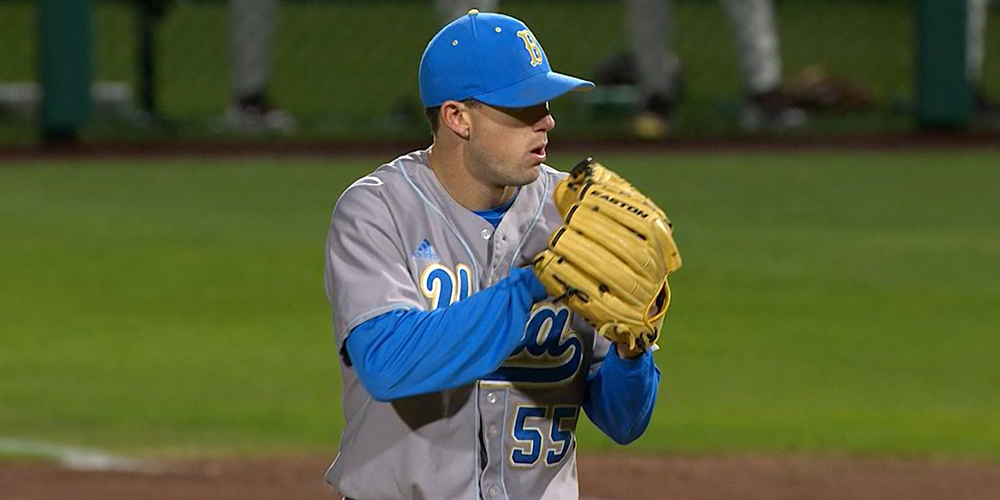
The sixth MLB Draft profile in this seemingly endless series is on UCLA right-handed pitcher Griffin Canning. He’s a more polished prospect who comes with some risk — and not just because he’s a pitcher (TINSTAAPP).
Previous profiles:
Vitals
6’1, 170 pounds
Position: Right-handed pitcher
Bats: Right
Throws: Right
DOB: May 11, 1996
Location
Los Angeles
Year: Junior
Rankings
Baseball America: 23
ESPN: 20
FanGraphs: 21
Hero Sports: 16
Minor League Ball: N/A
MLB.com: 17
Perfect Game: 23
Scouting Baseball: 19
Slot recommended bonus (No. 23): $2,702,700
Editor’s Note: All information of draft prospects compiled from Internet sources, scouting reports and video.
——
When you first look at Canning, it’s hard to see a 180-200 IP guy. But if you dig a little deeper, he definitely has the pitching IQ and ability to be a guy like that.
Canning’s frame is somewhat reminiscent of Walker Buehler‘s — at least, when he was drafted by the Dodgers. While Canning’s performance has been better overall, he’s not on the same level as Buehler was in 2015 and, obviously, as he is now. But his advanced feel for pitching and solid-average stuff should help him be a quality MLBer.
Canning lacks elite velocity with his fastball. He sits in the low-90s and can touche 95 MPH, but that’s a rarity. What helps his fastball play up is the arm-side run he gets on his 2-seamer. It moves away from lefties and in to righties. He has good command of the pitch and isn’t afraid to throw it inside to either type of hitter. He can straighten it out when he’s reaching back for some extra velo, but it’s much more effective in the 90-92 MPH range with movement. His best offspeed pitch is a hammer curveball. It sits in the high-70s and has a varying shape — sometimes it’s 12-6, sometimes it’s 11-5. It has solid swing-and-miss potential. He also has a mid-80s slider that projects to be at least average. It’s lacks consistent tilt, but it has good run away from righties (10-4 shape). It might not be much of a weapon against lefties. He also has a low-80s changeup that features good fade away to lefties. He doesn’t change his arm speed on it and it really looks like his 2-seamer coming out of his hand. It projects to be a plus-offering.
Where the risk and concern lie are with Canning’s delivery. It starts off conventional enough, but he breaks his hands quickly and instead of bringing his arm all the way around to the release point, he almost short arms his pitches. It probably looks a bit worse than it actually is, but the rest of his delivery is clean. He has a high 3/4 release point that helps him get movement on his fastball and changeup. He’s athletic and has reminded some of poor man’s Zack Greinke. He has the ability to add a little weight while not compromising that athleticism.
Video
Videos courtesy of rkyosh007, Prospect Pipeline and 2080 Baseball.
With two pitches projected to be above-average or better and the ability to throw four legitimate pitches, he should be in a rotation. If either of his breaking pitches take a step forward, he could be a high-end No. 3/low-end No. 2 starter. If not, he still projects to be a solid mid-rotation guy.
As a junior, he has the option of going back to school, but his stock probably won’t be any higher than it is now. He should be an easy slot-sign.
 Dodgers Digest Los Angeles Dodgers Baseball Blog
Dodgers Digest Los Angeles Dodgers Baseball Blog